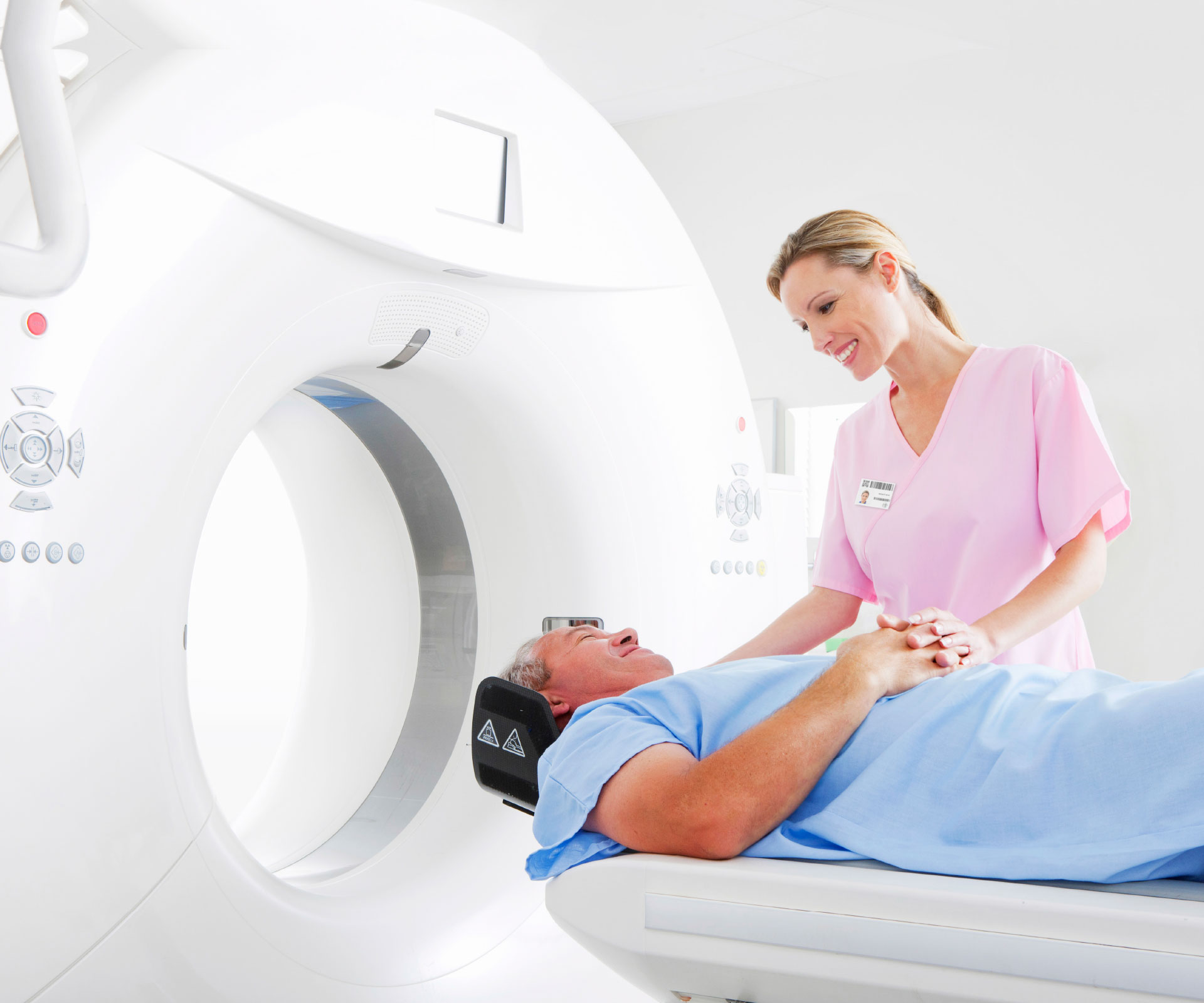MRI
What is it?
Magnetic resonance imaging is a technique that uses a magnetic field and radio waves to create detailed images of organs and tissues. It can produce 3D images that can be viewed from different angles.
What is it used for?
It’s used to diagnose a whole range of health issues, from brain and spinal conditions like aneurysms, tumours, multiple sclerosis and spinal cord injuries through to problems associated with organs, such as heart damage or blockages in blood vessels.
What happens?
It’s a non-invasive procedure that involves lying down on a movable table that slides into a big metal tube. You can’t feel anything but there is quite a lot of noise – tapping, thumping and banging. You may be given earplugs or music can be played.
Depending on what you are being tested for, you may be asked to carry out tasks such as answering questions, or a contrast material may be injected via an IV line
in your hand or arm. You have to lie very still because moving can blur the images.
Why do some people find it scary?
Being in a such a confined space can make some people feel claustrophobic. Others find it difficult to stay still. In some cases, you may be able to be given a sedative beforehand.
CT Scan
What is it?
A computerised tomography scan combines a series of X-ray images taken from various angles to provide a cross-sectional view of bones, blood vessels and soft tissues.
What is it used for?
It gives more detailed images than standard X-rays and is particularly useful for examining people who have suspected internal injuries from accidents or other trauma.
Because it allows doctors to see nearly all parts of the body, it is useful for diagnosing and monitoring diseases like cancer and heart disease, pinpointing the location of tumours or blood clots and planning medical and surgical treatment.
What happens?
CT scans are painless and in some cases only take a few minutes. You lie on a table that slides into a doughnut-shaped machine that makes whirring, clicking and buzzing noises. You need to keep still and may be told to hold your breath at some stages. You may also be injected with contrast material.
Why do some people find it scary?
They may not like the noises the scanner makes or feel comfortable about being injected with contrast material. Again, your doctor may be able to sedate you. Some people are nervous about radiation – there is more radiation than in a normal X-ray because the scanner is gathering more detailed information. However, the machines use the lowest dose of radiation possible to get the information they need.
Colonoscopy
What is it?
It is an examination used to check for changes or abnormalities in the large intestine (or colon) and the rectum.
Why is it used?
It can help your doctor diagnose possible causes of abdominal pain, rectal bleeding, chronic constipation, chronic diarrhoea or other intestinal problems. It is also a way of screening for colon cancer, whether you have symptoms or not.
What happens?
You will need to make sure your bowel is empty before having a colonoscopy, which involves taking a laxative or sometimes using an enema. You won’t be able to eat solid food the day before and will be restricted to drinking clear liquids only.
You are usually sedated for the procedure and may also be given pain relief via an IV drip. The doctor inserts a colonoscope – a long pipe with a camera on the end – into your rectum and pumps air into your colon to inflate it, providing a better view of the lining.
As well as being able to look at your colon, your doctor can also insert instruments via the pipe to take tissue samples (biopsy) or remove polyps. It usually takes around 20 minutes to an hour.
Why do some people find it scary?
It is an invasive procedure and there can be some discomfort, but pain medication should be able to help with that. There can be bleeding if a biopsy was done or a polyp taken. In very rare cases, there can be a tear to the colon or rectum wall. You may also feel groggy thanks to the sedation.
Colposcopy
What is it?
It is a procedure that allows your doctor to examine your cervix, vagina and vulva for signs of disease, using a special magnifying instrument called a colposcope.
Why is it used?
A colposcopy may be recommended if your smear test has shown abnormal cells. It can be used to diagnose cervical, vaginal or vulvar cancer, genital warts, pre-cancerous changes to the cervix, vagina or vulva and inflammation of the cervix.
What happens?
The procedure may be carried out in your gynaecologist’s office and takes between 10 and 20 minutes. A metal speculum will be placed in your vagina to hold the walls open and a bright light is shone into it. Your doctor will look through the colposcope and may apply a special solution that can show up suspicious cells. This solution may cause a burning or tingling sensation.
Your doctor may use a sharp instrument to remove any suspicious-looking cells they find. Cervical biopsies can cause discomfort but are not usually painful. You may experience some cramping. Biopsies of the lower vagina or vulva can cause pain, so your doctor may used a local anaesthetic to numb the area. You may experience light bleeding for the next day or two.
Why do some people find it scary?
This is an invasive procedure and there can be some discomfort or pain, and in some cases, depending on where biopsies were taken from, that can last for a couple of days after the colposcopy. But pain relief can help with this. Rarely, complications include infection, heavy bleeding and pelvic pain.
A hand to relax
If you’re scared about going through a medical procedure, let your doctor know – there may be steps they can take to help ease your anxiety, such as sedating you. Practising relaxation techniques like meditation can calm your nerves, as can listening to soothing music through headphones.




